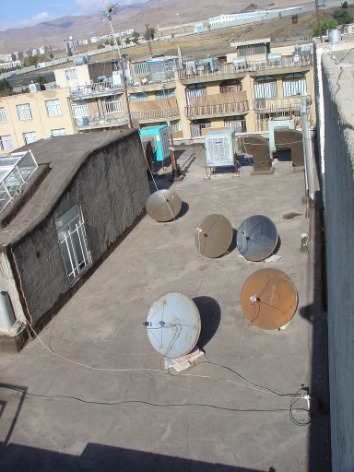Contents

Swing traders typically spend less time actively trading than day traders. Swing traders typically spend a few hours a day monitoring the markets and researching potential trades, but they may not execute trades every day. They may hold positions for several days or even a few weeks, so they don’t need to constantly monitor the markets or make quick decisions like day traders do. It captures the essence of day trading, by trying to complete round trip trades for profit in the shortest period of time ranging from seconds to minutes. Scalping tends to prioritize the shortest time frame charts like one-minute and five-minute time frames. The profit targets are also smaller in order to sustain a high probability to justify the larger position sizes.

But before we can begin to compare the two, we need to provide some clarity around each strategy so we can see what really differentiates them. Capital requirements can vary across the different markets and trading styles. Day trading requires more time than swing trading, while both take a great deal of practice to gain consistency. Those seeking a lower-stress and less time-intensive option might do better swing trading.
The swing trader looks for larger price moves and will utilize the same charts but on larger time frame charts. In fact, swing traders usually avoid smaller time frames so as not to get wiggled out on noise or slippage. Since fewer trades are being made, the direct routing of executions is not as high a priority for a swing trader. However, executions are always a factor with trading and utilizing smaller time frames for buy and sell triggers signals complemented by direct routing execution can enhance results. The core distinction between day and swing trading is time frames. Day trading focuses on intraday whereas swing trading focuses on days to weeks.
With VectorVest, you are always able to access clear recommendations on what to buy, and when you should buy it. Especially when implementing a short-term strategy like day or swing trading, there is no room for guessing or small errors–you need clear and accurate information, quickly. No other software can provide you with such world-class stock analysis and forecasting, and can provide you with a straightforward way to make money in the markets. Thus, finding the right tools can be instrumental in making your short-term trading strategies profitable and effective–no matter if you’re using day vs swing trading. Based on the nature of the strategy, swing trading can require a longer timeline than day trading, since it’s based on the swings in the market that can last days or even weeks.
Choosing day trading or swing trading also comes down to the trader’s personality and preference. Consistent results only come from practicing a strategy under numerous different market scenarios. That takes time and should involve making hundreds of trades in a demo account before risking real capital. Many brokers offer a paper trading demo account for free to allow you to learn the platform and practice your strategies.

https://en.forexbrokerslist.site/ trading, on the other hand, does not require such a formidable set of traits. Swing traders should also be able to apply a combination of fundamental and technical analysis, rather than technical analysis alone. A day trader operates in a fast-paced, thrilling environment and tries to capture very short-term price movement.
What Is Swing Trading vs Day Trading?
Day traders typically buy and sell securities within the same day, often multiple times per day. For day trading futures, it’s best to start with at least $5,000 to $7,500. These amounts depend on the prices of the futures contracts you’re trading. Day trading some contract types could require much more capital, while a few contracts, such as micro contracts, may require less. You’ll likely want to build up to and keep at least $10,000 in your account, preferably $20,000 if you’re looking to draw an income from swing trading.
He holds a BS from the University of Illinois at Urbana-Champaign and an MBA from Illinois Institute of Technology, Stuart School of Business. Swing trading tries to identify entry and exit points into a security on the basis of its intra-week or intra-month oscillations, between cycles of optimism and pessimism. Amanda Jackson has expertise in personal finance, investing, and social services.
Over the year, that comes out to about 36%, which sounds good but offers less potential than a day trader’s potential earnings. An exit point is the price at which a trader closes their long or short position to realize a profit or loss. Swing trading is one of the most popular forms of active trading, where traders look for intermediate-term opportunities using various forms of technical analysis. Day traders execute short and long trades to capitalize on intraday market price action, which result from temporary supply and demand inefficiencies. An investor must make many more trades when day trading and all positions are often closed by the end of each market close.
Swing traders will use tools like moving averages overlaid on daily or weekly candlestick charts, momentum indicators, price range tools, and measures of market sentiment. Swing traders are also on the lookout for technical patterns like the head-and-shoulders and cup-and-handle. By analyzing the chart of an asset they determine where they will enter, where they will place a stop loss, and then anticipate where they can get out with a profit. If they are risking $1 per share on a setup that could reasonably produce a $3 gain, that is a favorable risk/reward ratio. On the other hand, risking $1 only to make $0.75 isn’t quite as favorable.

They can signal a coming bullish breakout above an area of resistance after it has been tested several times. Right off the bat, it’s imperative to make clear that trading is not investing, which adopts a passive buy and hold theme. Investing implies that you will buy and hold a stock for years at a time. However, that’s not to say that one is inherently better or more profitable than the other. No trading strategy is foolproof and no strategy can ever offer a one-size-fits-all approach to trading profitably. Swing trading, at least in theory, shares a number of similarities with day trading.
The process of borrowing shares is done electronically through the broker. Brokers usually provide a daily updated list of stocks available to short. Broker platforms will also typically warn when specific shares are not available for shorting. When a stock falls below the stop price , the stop-loss order converts to a market order, which is executed at the market price.
Top 25 Best-Performing Stocks: February 2023
Example of a 1.03% price range formed during an afternoon trading session. With 5 minutes until $ES_F open we see high liquidity at $4025 (yesterday’s high) being traded into. After working many years in the website marketing industry, he decided to take on blogging full time and also get his finances headed in the right direction. Strictly Necessary Cookie should be enabled at all times so that we can save your preferences for cookie settings.
It has not been prepared in accordance with legal requirements designed to promote the independence of investment research and as such is considered to be a marketing communication. Although we are not specifically constrained from dealing ahead of our recommendations we do not seek to take advantage of them before they are provided to our clients. You can day trade on any market, but the most common ones are forex, shares and indices. Forex, in particular, is popular because of the wide variety of different forex pairs and the market’s inherently high liquidity – which makes it easier to open and close your positions quickly. The above material and content should not be considered to be a recommendation to invest in a strategy or any individual digital asset. Traders with appetites for high risk can profit even more by experimenting with leverage.

If you dread the thought of sitting in front of your computer all day, staring at flashing symbols, then you swing trading may be a better fit for you than day trading. But when comparing swing trading with day trading, there simply is no “right” answer to that question. ✔ More time to research the stock – One of the biggest benefits of swing trading is that you have more time to do research on a company before deciding to invest. You continue holding the stock while bullish momentum carries it higher over the next several days to weeks. Below is a simple comparison of day vs swing trading, including the top pros and cons of both.
What is swing trading?
While a swing trader can enjoy success in any number of securities, the best candidates tend to be large-cap stocks, which are among the most actively traded stocks on the major exchanges. Swing trades are also viable in actively traded commodities and forex markets. As swing trade positions blossom over a longer period of time, there is greater potential for higher gains compared to day trading. The methodology of swing trading is also slightly different than that of day trading. Swing traders think about long-term trends when selecting positions, and then try to buy and sell at intermediate highs and lows within those trends. Day traders are largely unconcerned with the long-term and instead try to buy and sell based on small intraday market fluctuations.
- Results are obtained quickly with all positions usually closed out by the end of the day avoid overnight risk.
- Both day trading and swing trading require time, but day trading typically takes up much more time.
- This is perfect at times due to the fact that the market might see a reversal and head into the direction initially predicted by the trader.
- Consistent results only come from practicing a strategy under numerous different market scenarios.
- A swing trade takes place over days or weeks, rather than in one day.
This https://topforexnews.org/ is relatively straightforward and can be done with most trading accounts. Many invest for the long-term, seeking to build wealth over time, while others trade for short-term profits — and many people do both. There are a variety of strategies for trading, but one of the most accessible to newcomers is swing trading. Swing trading and day trading are trading styles defined by the timeframe in which financial instruments are bought, held and sold. Discover their differences and find out how you can use these styles to trade forex. The swing trader will hold this position until another anticipated price level comes through.
Which provides a more reliable return, swing trading or day trading?
Day traders seek to capitalize on intra-day momentum and price volatility utilizing shorter holding periods to close out positions. Although the answer is not that simple; so many factors are involved in comparing the profitability of the different trading styles. Some of the charts generally used by swing traders are moving average crossovers, head & shoulder patterns, cup & handle patterns, flags, and triangles.
Day traders rely heavily on technical analysis and sophisticated charting systems to detect trading patterns and identify strategic enter and exit opportunities. Much of the seemingly “random walk” of prices from minute to minute throughout the day may appear as noise. Swing trading and day trading are both active trading strategies that aim to profit from short-term and medium-term price movements respectively. ✔ More relaxed approach – Since swing trading means that you’re holding stocks for a longer period of time, you don’t have to be as stressed out or anxious.
Swing Trading positions are usually held a few days to a couple of weeks, but can be held longer. However, there can be occasions where a swing trader can also have specific swing trades that result in significant gains or losses in a brief period. Therefore, a swing trader usually does not take up trading as a full-time job. A Day TraderThe day trader is an individual who trades in the financial markets daily to earn profits by exploiting the inefficiencies present in the market. The three types of traders are – individual traders, financial institution traders, scalpers and momentum traders. Usually, markets are most volatile during their open and close times.
In fact, the https://forex-trend.net/ can move several percentage points in the opposite direction, and the trader may still avoid losses. This is perfect at times due to the fact that the market might see a reversal and head into the direction initially predicted by the trader. However, this freedom comes at the price of periodical funding fees. Swing traders hold their positions overnight and leave the position open for weeks, if not months. On the other hand, day traders make intraday trades and will never leave a position open overnight.
Thus, this strategy is highly reliant on technical analysis and software systems that can help detect patterns and identify opportunities. Not just with the capital needed to enter positions, but to complete the whole set-up with state-of-the-art technology and systems. Capital requirements vary for day traders and swing traders, depending on whether they trade the stock, forex, or futures markets. Ultimately, each swing trader devises a plan and strategy that gives them an edge over many trades.
